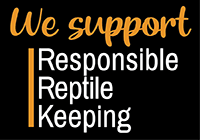Mixing vs Layering Your Biodegradables — Which Works Better?

Biodegradables (i.e. organic materials such as bark, leaves, and dried moss) are an essential ingredient in a functional bioactive substrate. They give your clean-up crew (CUC) something to eat, which keeps them alive and thriving to break down your pet’s waste and help work your soil. Plus, when they excrete the waste which results from eating biodegradables, they’re delivering nutrients to the soil in a form that is more useable to your plants. This is essential to the long-term well-being of a bioactive since plants will “eat” up all the nutrients in your soil unless they’re being continually replaced. In other words, biodegradables also perform an essential function as part of Mother Nature’s original fertilizer delivery system.
Now that’s established, let’s discuss how mixing versus layering affects the functionality of biodegradables in your vivarium’s substrate — and the functionality of your bioactive as a whole. There are a few different trains of thought when it comes to how to organize a vivarium, so here are our thoughts on the subject:
Layering
When you layer your biodegradables, you put in your bioactive substrate base first, then layer your leaves, bark, and sphagnum moss on top of the strata. Layering is useful for creating shelter and microclimates for the CUC to breed and proliferate in, and it generally does a good job of assisting humidity retention and reducing fluctuations in your humidity levels. However, you risk substrate compaction, which reduces drainage and makes it more difficult for nutrients to diffuse through the soil and reach plant roots. It also makes it more difficult for beneficial bacteria and mycorrhizae to proliferate throughout the soil, which encourages stagnation (bad bacteria growth) and makes it more difficult for plants to thrive.
Mixing
When you mix your biodegradables, you stir them into the substrate base. This initial mixing process aerates your soil, creating an opportunity for beneficial bacteria and fungi to take root, as well as improving drainage. This also helps create pockets of moisture for your CUC, which is especially important in dry, semi-arid-type vivariums. Later, when your bioactive is more established, mixing new biodegradables in rather than just tossing them on top re-loosens the soil, interrupts the growth of anaerobic (bad) bacteria, and restores drainage. In addition to helping your microfauna helpers thrive, good drainage helps uniformly distribute new nutrients throughout the soil, better nourishing your plants.
Conclusion
Biodegradables are essential to the health of both plants and CUC, helping keep your bioactive hygienic, and sustainable for years, but how you use these essential ingredients is just as important as having them. Re-creating a whole ecosystem inside a terrarium is complicated, and as usual, best practice seems to be somewhere in the middle between two extremes. When setting up your vivarium, make sure to mix all of your ingredients together, then add a layer of biodegradables on top (more for forest and tropical setups than semi-arid). When topping off your biodegradables, take a moment to stir up the substrate a bit to mix in the old stuff before adding the new layer.
Image by Jacques GAIMARD from Pixabay.
- Rebekah Walenta










